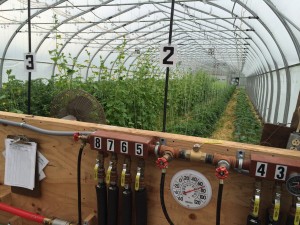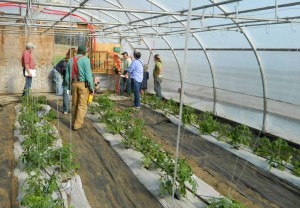
This project demonstrated the use of biomass heating for greenhouse vegetable production at sites across Vermont. From 2008 through 2015, 25 growers received cost-share funds for greenhouse biomass heating systems.
In the Northeast, early and late season production of food crops using greenhouses requires the addition of heat to maintain temperature and also to control humidity. The heating fuel used is generally propane or other fossil fuels.

The use of greenhouses, and greenhouse heating, are on the increase in Vermont as growers respond to increased demand for local food throughout the year. Greenhouse production is also on the rise because it allows growers to protect against extreme weather events such as heavy rain or drought, and it affords better control of the growing environment, leading to improved yield and quality. However, using fossil fuels to control the growing environment is costly and these fuels also contribute to greenhouse gas emissions. Vermont greenhouse growers produce $24.5 million in crops using 2.6 million square feet of growing area at an estimated annual heating cost of $1.8 million. Many of these growers are interested in alternatives to fossil fuels for heating in order to improve their profitability and/or reduce their environmental impact.

This project demonstrated the use of biomass heating for greenhouse vegetable production at sites across Vermont. From 2008 through 2015, 25 growers received cost-share funds for greenhouse biomass heating systems. The total installed cost of these systems was $312,766; the average cost per system was $12,511 and the average cost-share (i.e. sponsor funding) on these projects was 44% of the total cost. The growers installed a variety of system types depending on desired fuel, heating load and method of heat distribution (hot air or hot water). The project started in 2008 and the systems have operated for the equivalent of 96 growing seasons in total with an average of 3.8 growing seasons per system, an average net fuel savings of $2,696 per system per year, and an average payback of 4.8 years (at full cost). From 2008 through 2015 a total of 15.3 trillion BTU of biomass energy was provided to these greenhouses, equivalent to 167,000 gallons of propane. The cumulative equivalent carbon dioxide emissions avoided by this substitution of fuel is estimated to be 2.14 million pounds. This is roughly equivalent to the annual emissions from 204 cars, or 2.3 million miles of car travel.
You can download the final report here.
